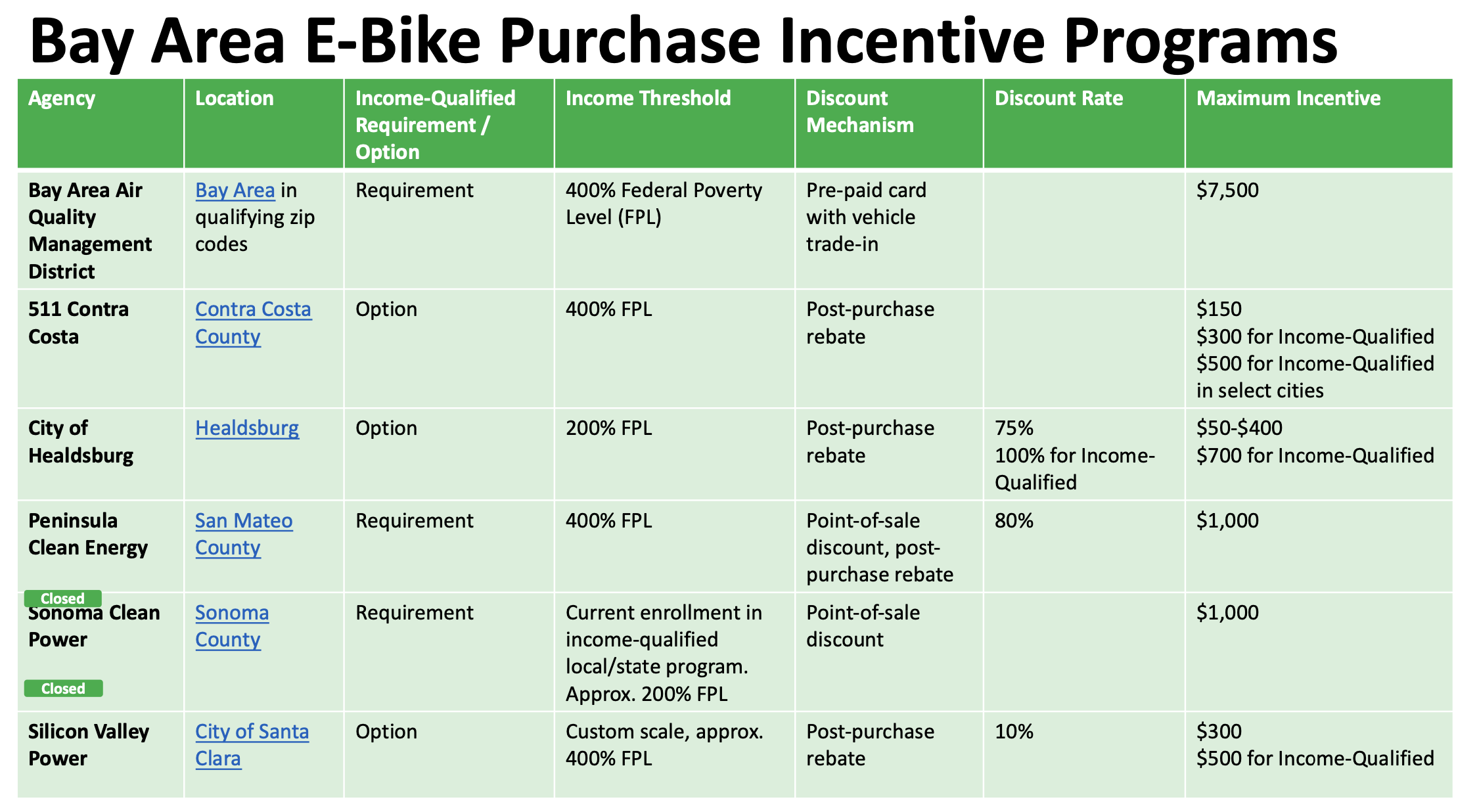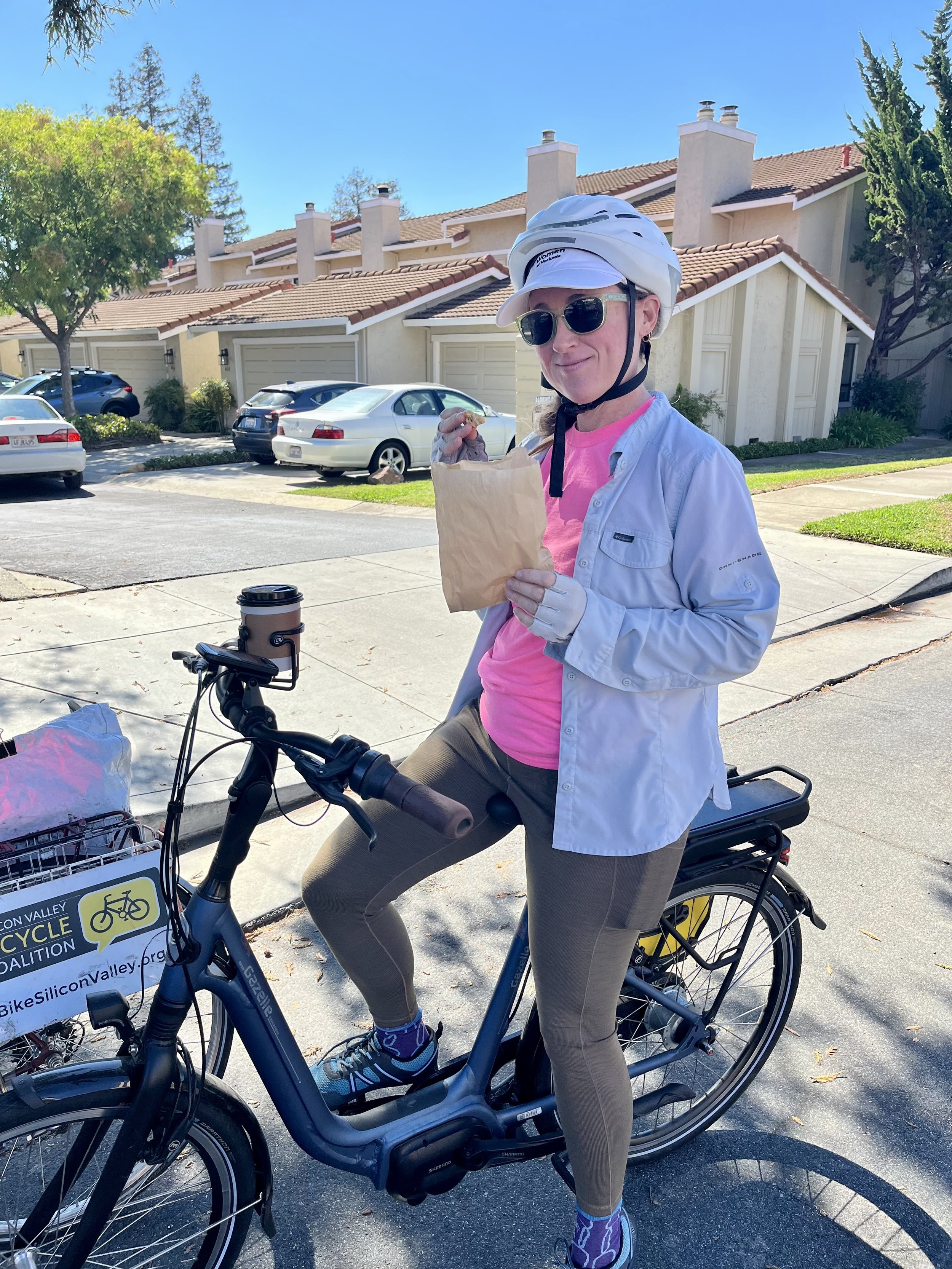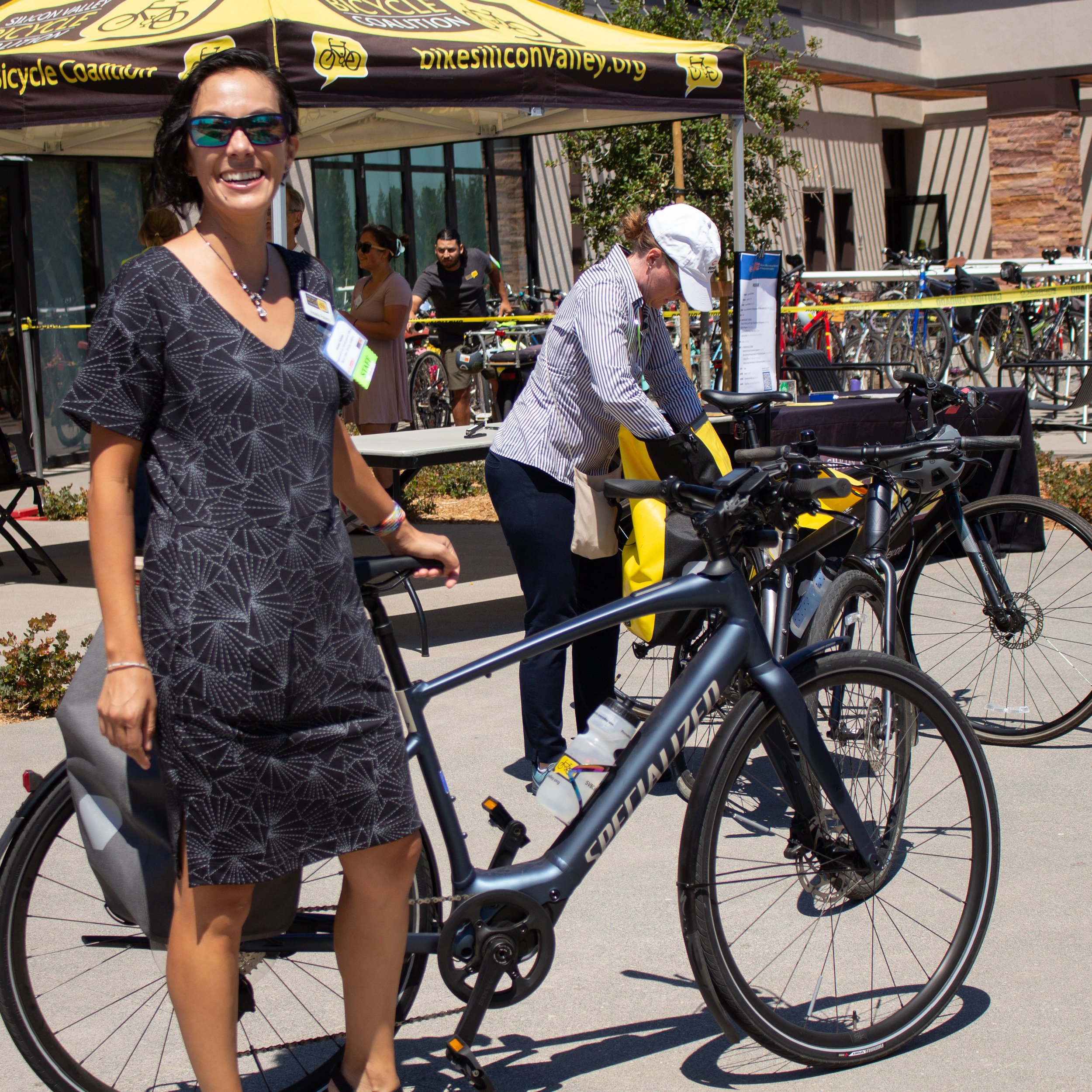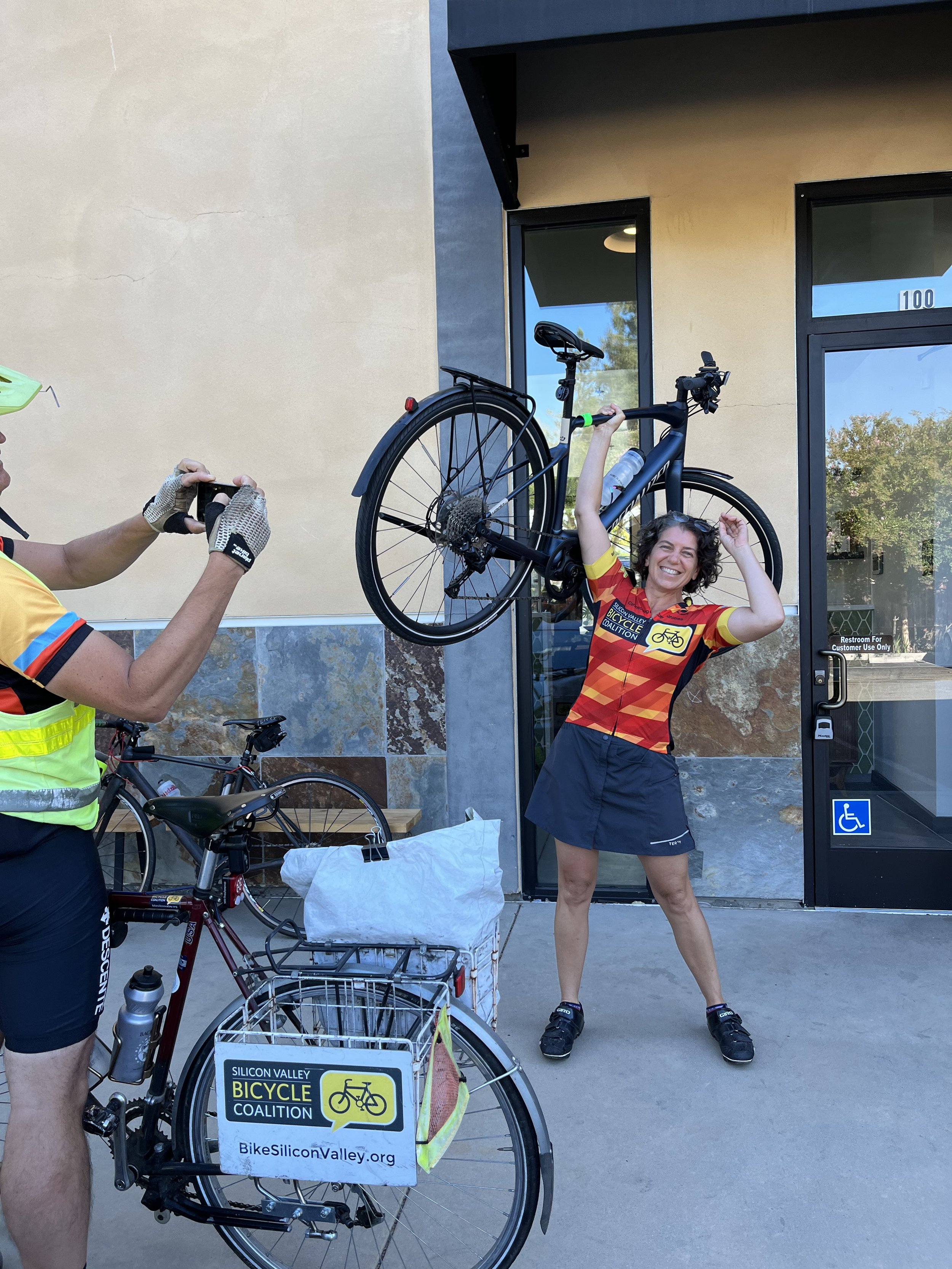Ebikes: A snapshot of today
In January of 2020, Phillip Kobernick from Peninsula Clean Energy (PCE) came to SVBC with an idea. The idea was to provide incentives for the purchase of ebikes to low income families and individuals. PCE subsequently launched one of the first ebike incentive programs in partnership with SVBC. Since that time, the program has become an early, on-the-ground temperature gauge for the ebike market. Read on for an overview by SVBC Volunteer Scott Brown, writer, editor, content strategist and former journalist, and learn of the transformative role ebikes are playing in achieving a more healthy and just transportation ecosystem.
Ebikes have quietly been turning a corner this year. Options have climbed, and awareness and acceptance have expanded. Purchase incentives are coming into play, supporting social and economic equity. And a shift in riders continues, from early adopters, to vast numbers of every-day people seeking more practical, healthier, convenient and environmentally friendly transportation.
We’ve seen this at Silicon Valley Bicycle Coalition (SVBC), where our one-hour introductory ebike webinars regularly draw 30-50 registrants. Questions are no longer about “should I get an ebike?” but rather about needs and features.
“Most questions surrounded the technical and specs aspects — where can I find a lightweight ebike? How far can this powerful of a battery go? Or they surrounded selecting ebikes — do you know where I can test ride an ebike around the Bay Area? What is a good entry level ebike model?” Says Eleni Jacobson, SVBC community programs coordinator and co-leader of the event.
Meantime ebikes are taking on more and more trips formerly made by cars. And they are opening new avenues of economic, health and social opportunity for low-income and under-served communities, as they enable far more affordable transportation for many common missions, and help link to public transit for longer trips.
Ebikes by the numbers
U.S. ebike sales have grown rapidly each year to total more than 800,000 in 2021, says Ray Keener, of the advocacy group People for Bikes. Keener outlined trends to bike transportation advocates, policy leaders and public officials at the Bicycle Coalition’s 2022 Bicycle Summit in August. The sales total outpaced that of all electric and plug-in hybrid cars sold that year, according to Bloomberg.
Ebikes show particular appeal for those on tight budgets due to the low operating cost – if they can afford the purchase price, says Phillip Kobernick, transportation program manager for Peninsula Clean Energy, a clean-energy electricity utility which powers San Mateo County.
“The real story is that car trips are the number-one thing people are replacing, using e-bikes,” says Kobernick, who partnered with SVBC to plan and deliver Peninsula Clean Energy’s Ebikes for Everyone program, the first such collaboration in Silicon Valley and an early example in the state.
Peninsula Clean Energy has for the past two years offered purchase rebates of up to $1,000 to San Mateo County’s lower-income residents, to support those in need and reduce pollutants. SVBC in the meantime has provided promotion, education and support. So far the program has aided more than 500 low-income people in buying and using ebikes.
Follow-on surveys show that:
94% of buyers reported replacing car trips with bike trips
75% of trips were practical — like work, errands, friends and family — rather than recreational
30% of respondents said the ebike had become their primary transportation
Peninsula Clean Energy’s findings parallel those of several other large-scale studies, including a nation-wide survey by Portland State University researchers in 2018 considered to be the most authoritative to date, and another by Shimano in 12 European countries in 2021. And while early studies showed ebike use tilting toward white, college-educated males, use appears to be broadening. Peninsula Clean Energy rebates, for example, have climbed to 40% to women so far in 2022, from 30% in 2021.
A new model takes shape
Transportation advocates note that ebike expansion requires more than incentive pricing.
“It’s important to highlight that incentives really need to have an overall programmatic component” — to be part of a rounded plan that includes education, training and support to consumers, and ongoing market research — says Shiloh Ballard, SVBC’s executive director.
Consumers want to know about ebike technology, how to buy, and how to use it safely, for example. And program managers still have much to learn about consumers, for example, why do fewer women than men buy ebikes, what are appropriate income, emission or purchase price levels for incentives, what incentives work best for specific goals, and how to best identify and mitigate hurdles to ebike use.
Early on, Peninsula Clean Energy chose to partner with SVBC for expertise in structuring the program. They meet regularly to compare notes, adjust and plan next steps.
“Our main feedback was, the rebate idea to aid low-income people and reduce pollution is awesome — and — you should consider a programmatic element, like bike rides and classes to help people through the buying and riding process,” says Ballard.
“We see it as raising the tide for everyone,” Kobernick says.
Ebike incentives to aid CA’s efforts to fight pollution
It’s no secret that federal and state agencies nationally have put hundreds of millions of dollars into incentives for electric car purchase — but little into ebikes.
Incentives have lagged, perhaps in part because awareness is only now building about the role for bicycles as a part of equitable, practical, environmentally friendly regional transportation networks, says Jared Sanchez, senior policy director for California Bicycle Coalition, or Calbike, a statewide bicycle advocacy organization.
Awareness seems to be building from bottom up rather than top down, he says. It flows from local entities like Peninsula Clean Energy, or advocacy groups focused to safety and equity, such as SVBC and Calbike, to city, county and state transit project managers and communities that value multi-modal transportation and safety for all transportation users, rather than traditional driver-dominated roadways.
“It’s come down to states, and even below that, to the local level, to implement programs,” said Sanchez. See Calbike’s list of incentive programs around the state, which includes several in the Bay Area, including San Mateo County, Santa Cruz County, Santa Clara’s Silicon Valley Power, and Alameda. Perhaps the most important incentive is local investment in street infrastructure that improves safety for riders. “It’s definitely a ground-up action.”
One potential game-changer advocates look to is a California Air Resources Board allocation of $10 million statewide for ebike incentive programs — the first such large-scale program of its kind.
"Ebikes are awesome. And now California is one step closer to providing 'on-the-saddle,' point-of-sale incentives to help income-eligible folks purchase electric bicycles," California Air Resources Board Deputy Executive Officer Craig Segall says, in a statement. "This will turn more car trips into bike trips by giving people access to electric bicycles any time they would like.”
The agency has chosen San Diego-based Pedal Ahead to implement the program. Research and planning is now under way, with a likely focus both on low-income goals and on emissions reduction, Ed Clancy, founder and president of Pedal Ahead, tells SVBC.
Expect a public and transparent process, Clancy says, with details emerging later this year for a program currently targeted to launch in early 2023.
“We have the right experience in order to really take this to the next step.” says Clancy, whose Pedal Ahead is focused on socially conscious transportation, particularly for those of limited means or access to alternatives.
At Peninsula Clean Energy, an incentive program for 2023 has yet to be decided, Kobernick says. Officials are evaluating what changes they might make in the current program — for example whether to continue the focus on low-income rebates, whether to change rebate levels, and whether to limit sales to local bike shops — and such factors as the emerging state-wide program.
“Ebikes seem to be a real game changer — making everything more accessible, easier, fun and impactful,” Kobernick says.






